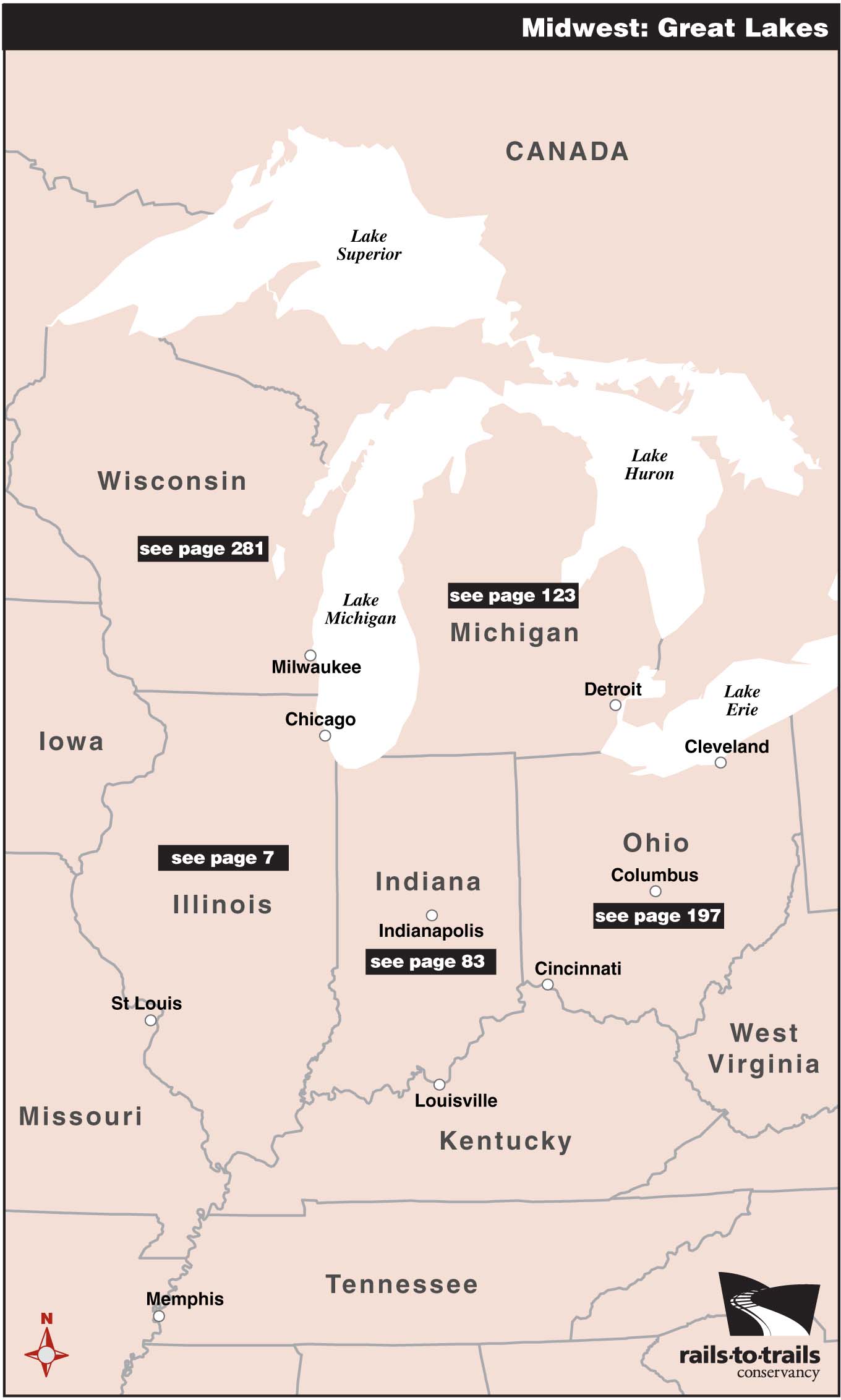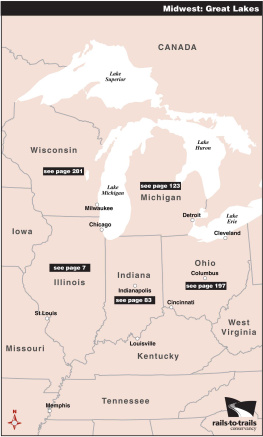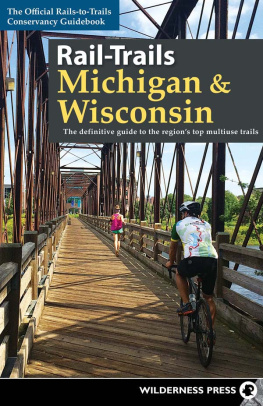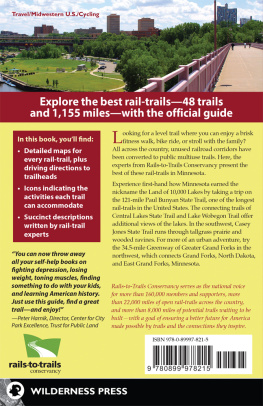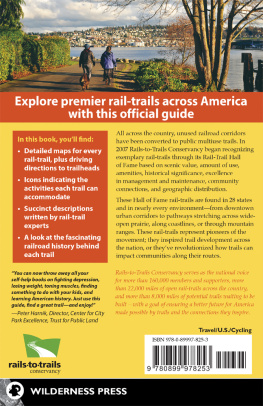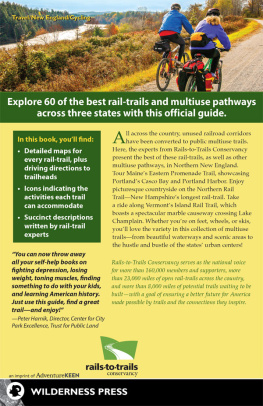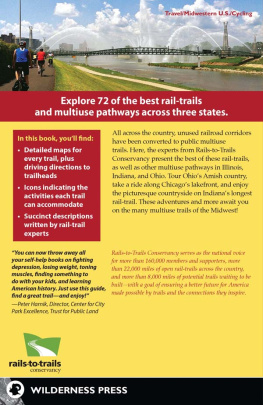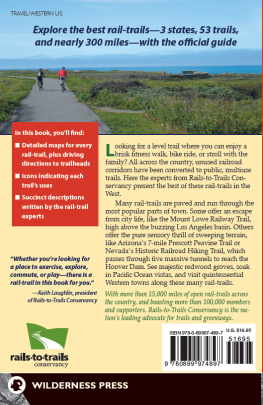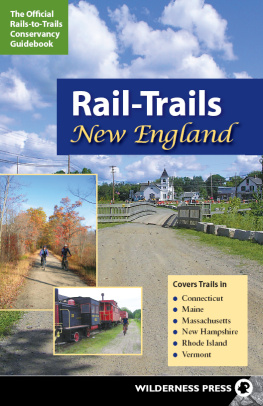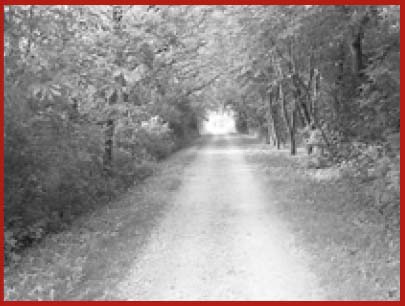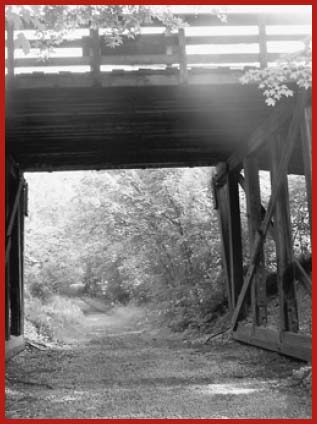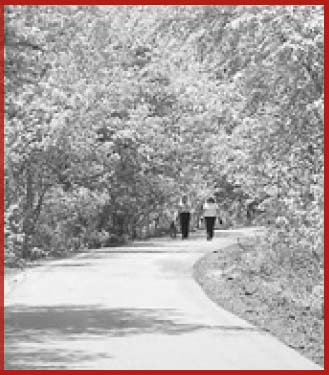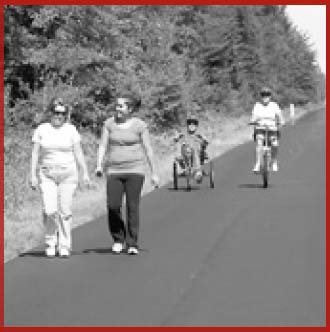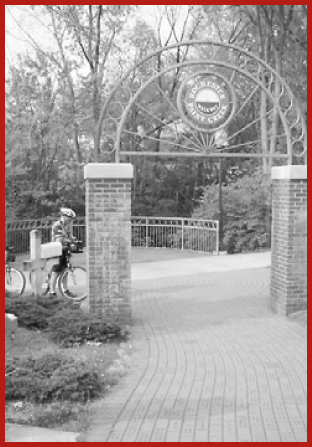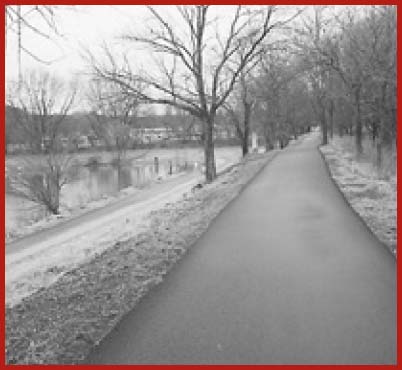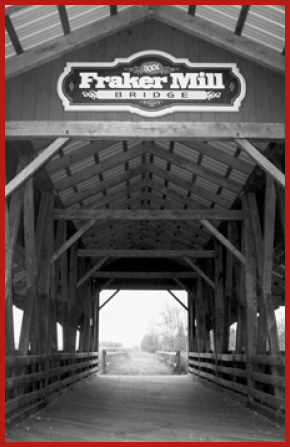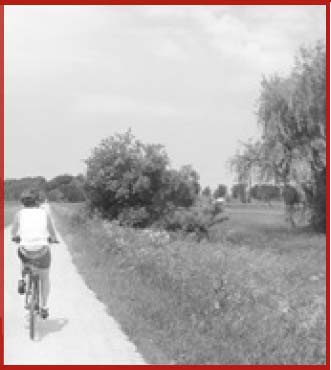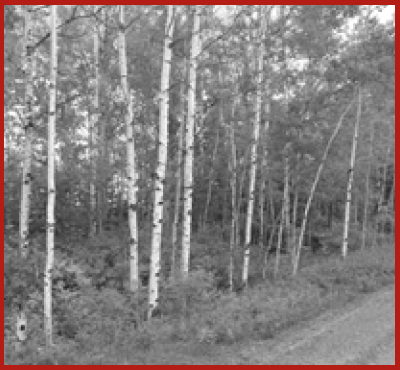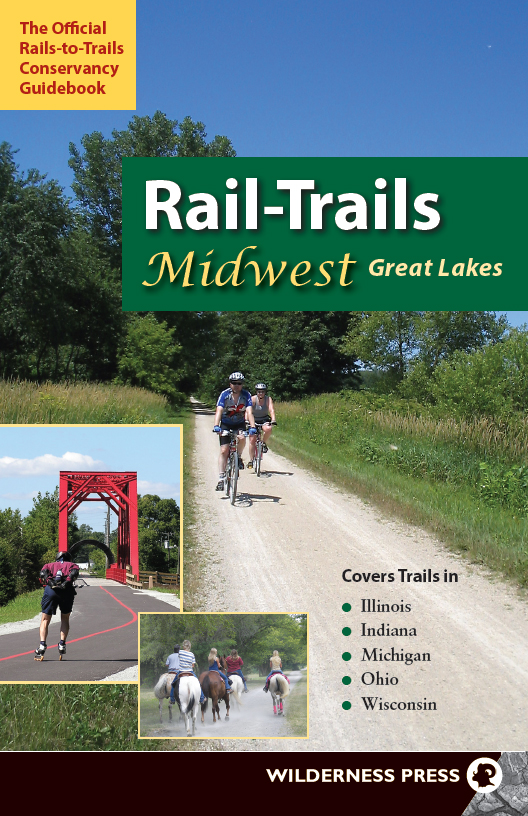
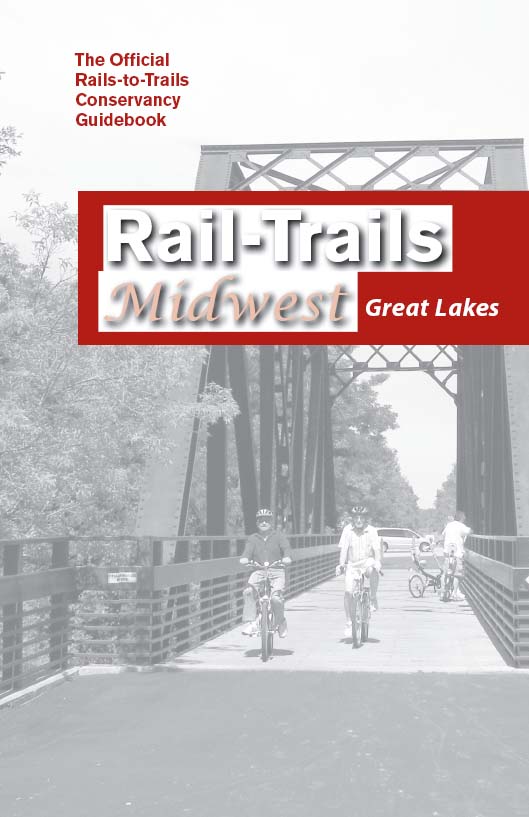
Rail-Trails Midwest: Great Lakes
1st EDITION 2009
3rd printing 2010
Copyright 2009 by Rails-to-Trails Conservancy
Front and back cover photographs copyright 2009 by Rails-to-Trails Conservancy
All interior photographs by Rails-to-Trails Conservancy
Maps: Tim Rosner, Gene Olig and Lohnes+Wright
Map data courtesy of: Environmental Systems Research Institute
Cover design: Lisa Pletka and Barbara Richey
Book design and layout: Lisa Pletka
Book editors: Laura Shauger, Jennifer Kaleba and Wendy Jordan
ISBN 978-0-89997-467-5
Manufactured in the United States of America
| Published by: | Wilderness Press |
| Keen Communications |
| PO Box 43673 |
| Birmingham, AL 35243 |
| (800) 443-7227; FAX (205) 326-1012 |
| info@wildernesspress.com |
| www.wildernesspress.com |
Visit our website for a complete listing of our books and for ordering information.
| Cover photos: | Glacial Drumlin State Trail (main image) ; Monon Trail (upper left) ; Lakelands Trail State Park (lower right) ; Sam Vadalabene Great River Road Bike Trail (back cover) |
| Title page photo: | Pere Marquette Rail-Trail |
All rights reserved. No part of this book may be reproduced in any form, or by any means electronic, mechanical, recording, or otherwise, without written permission from the publisher, except for brief quotations used in reviews.
SAFETY NOTICE: Although Wilderness Press and Rails-to-Trails Conservancy have made every attempt to ensure that the information in this book is accurate at press time, they are not responsible for any loss, damage, injury, or inconvenience that may occur to anyone while using this book. You are responsible for your own safety and health while in the wilderness. The fact that a trail is described in this book does not mean that it will be safe for you. Be aware that trail conditions can change from day to day. Always check local conditions, know your own limitations, and consult a map.
About Rails-to-Trails Conservancy
Headquartered in Washington, D.C., Rails-to-Trails Conservancy (RTC) fosters one great mission: to protect Americas irreplaceable rail corridors by transforming them into multiuse trails. Its hope is that these pathways will reconnect Americans with their neighbors, communities, nature and proud history.
Railways helped build America. Spanning from coast to coast, these ribbons of steel linked people, communities and enterprises, spurring commerce and forging a single nation that bridges a continent. But in recent decades, many of these routes have fallen into disuse, severing communal ties that helped bind Americans together.
When RTC opened its doors in 1986, the rail-trail movement was in its infancy. While there were some 250 miles of open rail-trails in the United States, most projects focused on single, linear routes in rural areas, created for recreation and conservation. RTC sought broader protection for the unused corridors, incorporating rural, suburban and urban routes.
Year after year, RTCs efforts to protect and align public funding with trail building created an environment that allowed trail advocates in communities all across the country to initiate trail projects. These ever-growing ranks of trail professionals, volunteers and RTC supporters have built momentum for the national rail-trails movement. As the number of supporters multiplied, so too did the rail-trails. By the turn of the 21st century, there were some 1100 rail-trails on the ground, and RTC recorded nearly 84,000 supporters, from business leaders and politicians to environmentalists and healthy-living advocates.
Americans now enjoy more than 15,000 miles of open rail-trails. And as they flock to the trails to commune with neighbors, neighborhoods and nature, their economic, physical and environmental wellness continue to flourish.
In 2006, Rails-to-Trails Conservancy celebrated 20 years of creating, protecting, serving and connecting rail-trails. Boasting more than 100,000 members and supporters, RTC is the nations leading advocate for trails and greenways.
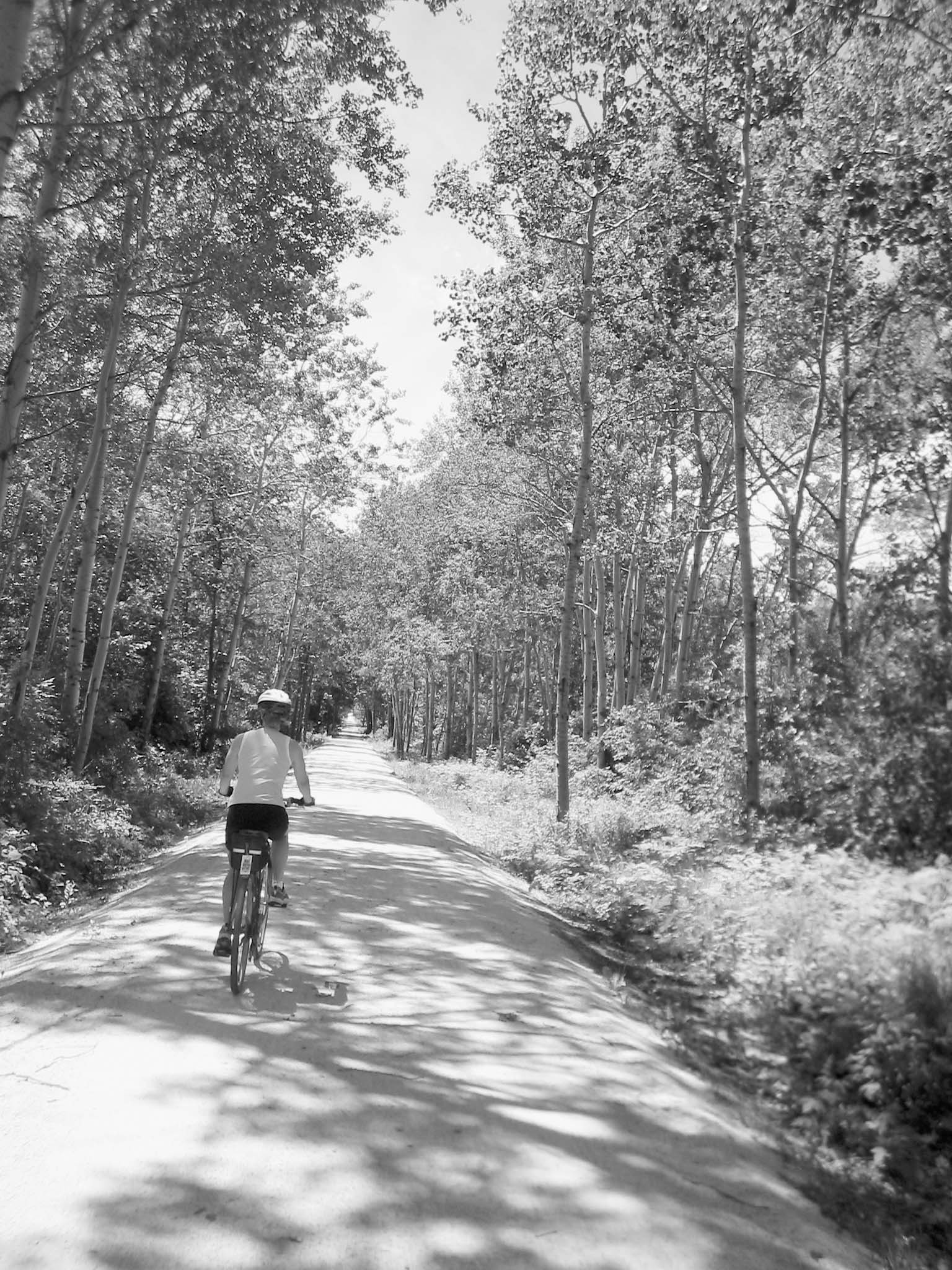
Ahnapee State Park Trail in Wisconsin
Foreword
Dear Reader:
For those of you who have already experienced the sheer enjoyment and freedom of riding on a rail-trail, welcome back! Youll find Rail-Trails Midwest: Great Lakes to be a useful and fun guide to your favorite trails, as well as an introduction to pathways you have yet to travel.
For readers who are discovering, for the first time, the adventures you can have on a rail-trail, thank you for joining the rail-trail movement. Since 1986, Rails-to-Trails Conservancy has been the No. 1 supporter and defender of these priceless public corridors. We are excited to bring you Rail-Trails Midwest: Great Lakes so you, too, can enjoy this regions rail-trails.
Built on unused, former railroad corridors, these hiking and biking trails are an ideal way to connect with your community, with nature, and with your friends and family. Ive found that rail-trails have a way of bringing people together, and as youll see from this book, there are opportunities in every state you visit to get on a trail. Whether youre looking for a place to exercise, explore, commute or playthere is a rail-trail in this book for you.
So I invite you to sit back, relax, pick a trail that piques your interestand then get out, get active and have some fun. Ill be out on the trails, too, so be sure to wave as you go by.
Happy Trails,
Keith Laughlin
President, Rails-to-Trails Conservancy
